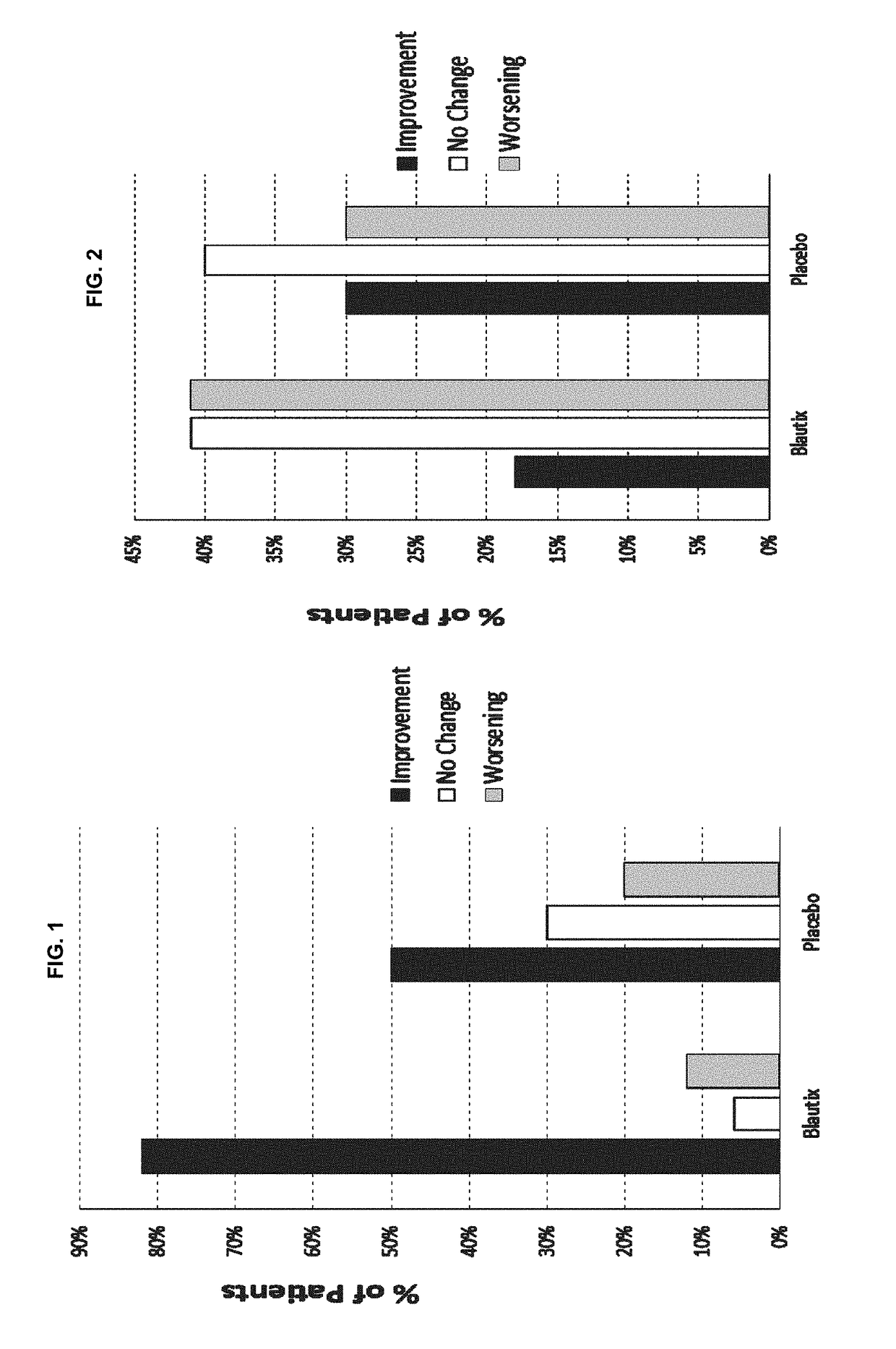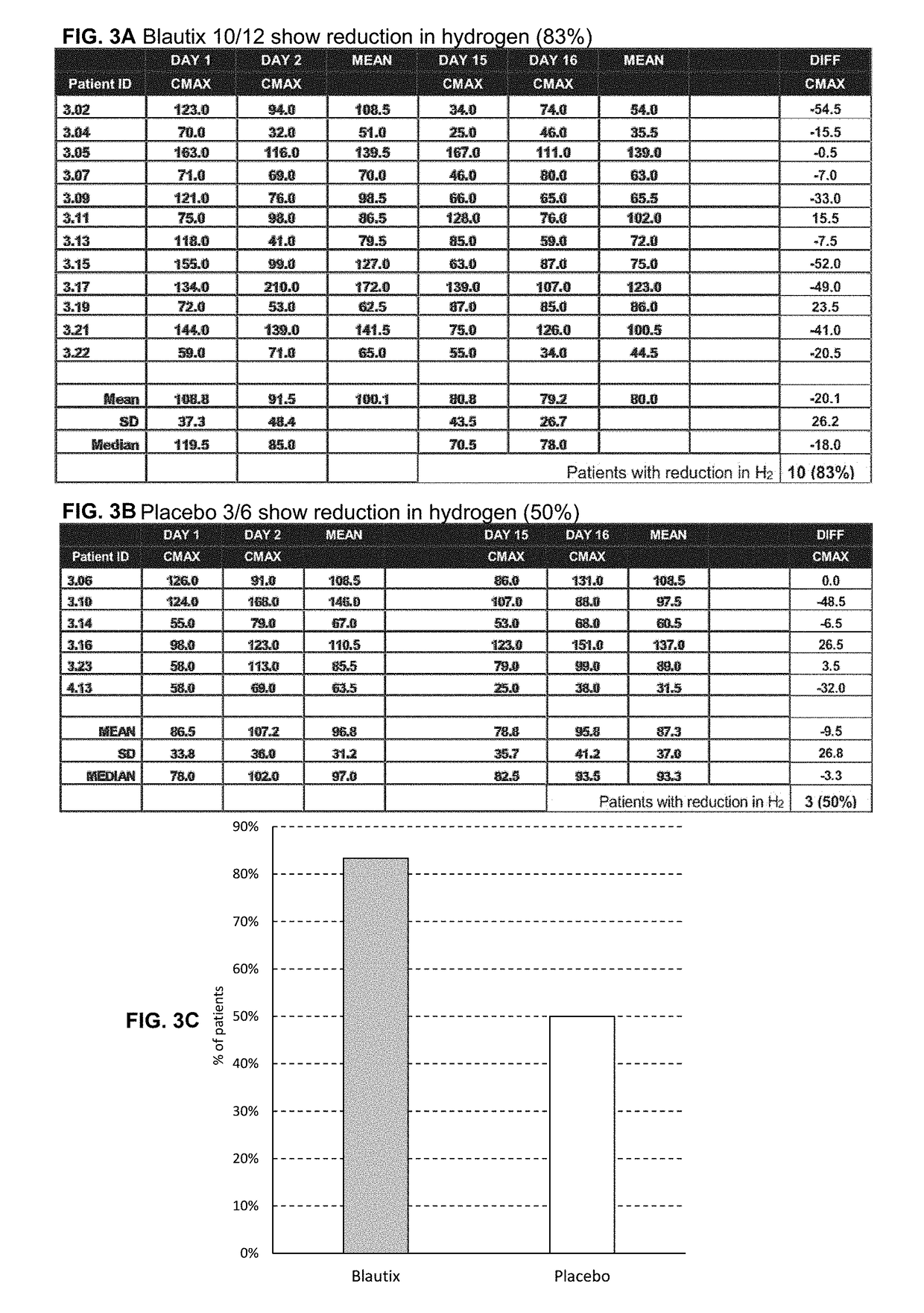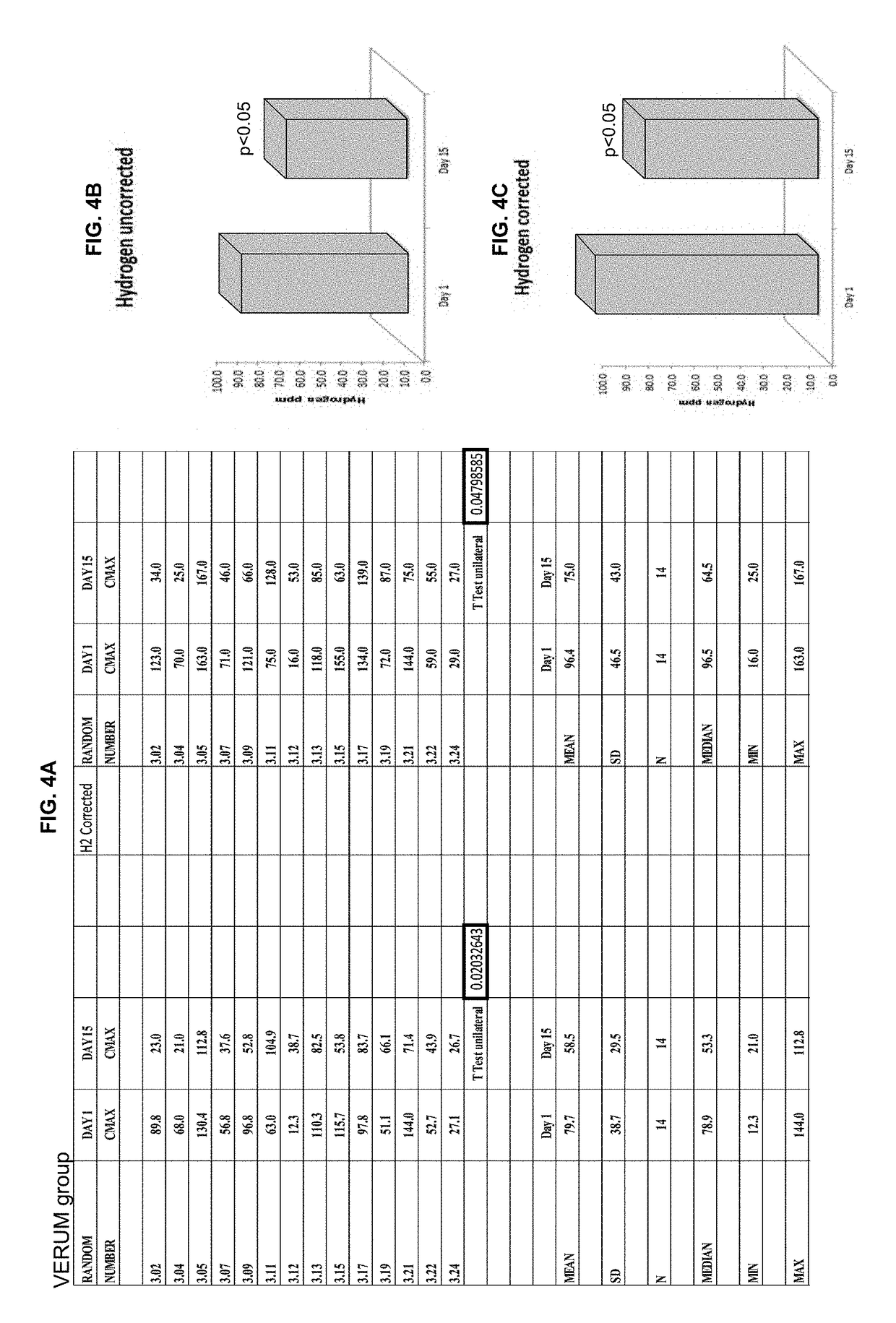Compositions comprising bacterial strains
a technology of bacterial strains and compositions, applied in the field of compositions comprising bacterial strains, can solve the problems of poor characterisation of the precise effects of particular bacterial strains on the gut, at a systemic level and on any particular type of diseases, and no teaching on how any of the proposed bacterial species could be used to treat any of the proposed diseases, and achieve the effect of the same safety and therapeutic effect characteristics
- Summary
- Abstract
- Description
- Claims
- Application Information
AI Technical Summary
Benefits of technology
Problems solved by technology
Method used
Image
Examples
example 1
n Patient Symptoms During Phase I Clinical Trial
[0135]A Phase I clinical trial was conducted in which Blautia hydrogenotrophica (“Blautix”, strain deposited under accession number DSM 10507 and also under accession number DSM 14294) was administered to human patients having irritable bowel syndrome (IBS). Patients were administered Blautix during a dosing period (days 1-16) with the washout period being day 19-23. Blautix was found to be both safe and well tolerated. Four symptoms were monitored, of which two were diarrhea and constipation. The study recorded whether patients experienced an improvement in, no change in or worsening of each of these symptoms. Results from patients administered Blautix were compared with those obtained using patients administered a placebo. Symptoms were monitored at three time points: day 1, day 15 / 16 and at the end of the study. The results are shown in FIGS. 1 and 2.
[0136]When the patients' reported symptoms at day 16 were compared to the baseline ...
example 2
Breath Test Results
[0139]Breath hydrogen levels are a biomarker of Blautix activity—MoA involves metabolism of endogenous H2 to produce acetate. Human subjects were administered lactulose and hydrogen (H2) levels (Cmax) were sampled at four time points: day 1, day 2, day 15 and day 16. Hydrogen uncorrected results were converted to hydrogen corrected results.
[0140]Some patients were excluded from the analysis. There were three reasons why a subject was not included in the hydrogen breath test analysis: 1) They produced a CMAX hydrogen breath test result of <20 on one of the four sampling days and were therefore deemed to have not responded to the test; 2) They were methane producers (taken as producing more methane than hydrogen in the breath test), this affects the hydrogen response; and / or 3) there was an aberrant value obtained in the hydrogen breath test (232 ppm). Subjects 3.12 (Blautix), 3.24 (Blautix), 4.07 (Blautix) were excluded as non-responders. Subjects 3.03 (Blautix) an...
example 3
Testing
[0143]A composition described herein containing at least one bacterial strain described herein is stored in a sealed container at 25° C. or 4° C. and the container is placed in an atmosphere having 30%, 40%, 50%, 60%, 70%, 75%, 80%, 90% or 95% relative humidity. After 1 month, 2 months, 3 months, 6 months, 1 year, 1.5 years, 2 years, 2.5 years or 3 years, at least 50%, 60%, 70%, 80% or 90% of the bacterial strain shall remain as measured in colony forming units determined by standard protocols.
Sequences
[0144]
PUM
| Property | Measurement | Unit |
|---|---|---|
| time | aaaaa | aaaaa |
| time | aaaaa | aaaaa |
| time | aaaaa | aaaaa |
Abstract
Description
Claims
Application Information
 Login to View More
Login to View More - R&D Engineer
- R&D Manager
- IP Professional
- Industry Leading Data Capabilities
- Powerful AI technology
- Patent DNA Extraction
Browse by: Latest US Patents, China's latest patents, Technical Efficacy Thesaurus, Application Domain, Technology Topic, Popular Technical Reports.
© 2024 PatSnap. All rights reserved.Legal|Privacy policy|Modern Slavery Act Transparency Statement|Sitemap|About US| Contact US: help@patsnap.com










